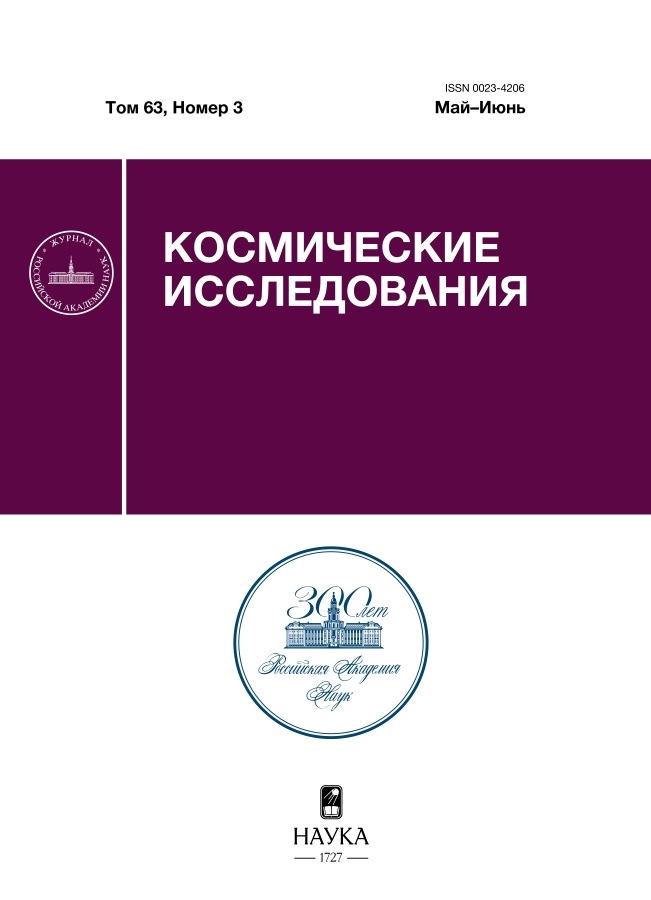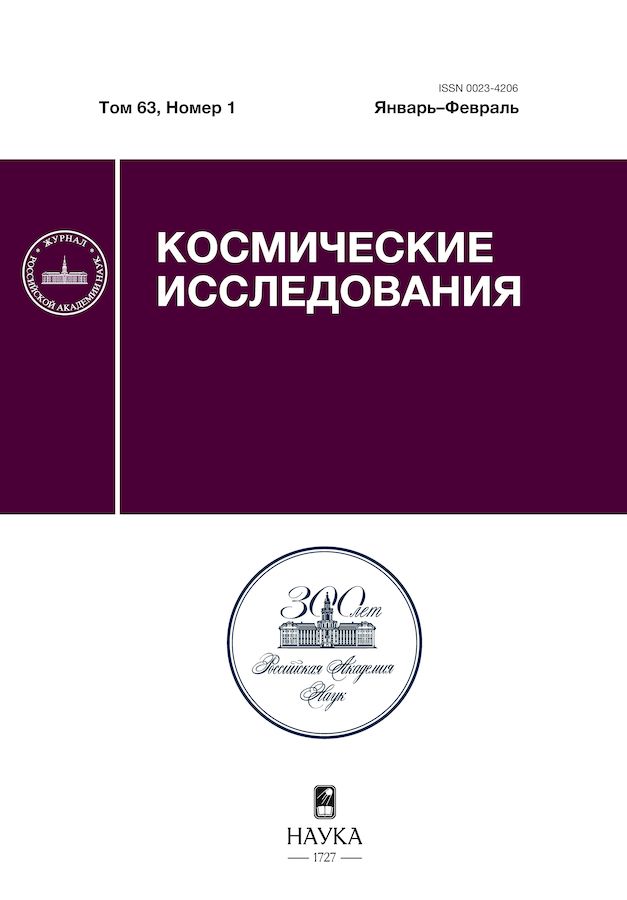Стендовая и натурная отработка оптической системы автономной припланетной навигации на окололунных орбитах
- Авторы: Жуков Б.С.1, Аванесов Г.А.1, Лискив А.С.1, Сметанин П.С.1
-
Учреждения:
- Институт космических исследований РАН
- Выпуск: Том 63, № 1 (2025)
- Страницы: 117-128
- Раздел: Статьи
- URL: https://permmedjournal.ru/0023-4206/article/view/682931
- DOI: https://doi.org/10.31857/S0023420625010116
- EDN: https://elibrary.ru/HDRDMM
- ID: 682931
Цитировать
Полный текст
Аннотация
Рассматриваются результаты стендовой отработки системы автономной оптической навигации, рассчитанной для работы на окололунных орбитах и на трассе перелета Земля – Луна. В состав системы входят широкоугольная навигационная камера, предназначенная для определения положения космического аппарата (КА) по горизонту планеты и по контрольным точкам на ее поверхности, узкоугольная навигационная камера, применяемая для уточнения положения космического аппарата по контрольным точкам, с использованием снимков более высокого разрешения, и два звездных датчика для определения ориентации камер. Отлаженное на стенде программно-алгоритмическое обеспечение системы использовано при обработке снимка лунной поверхности, полученного съемочной системой СТС-Л на КА “Луна-25”. Все контрольные точки из разработанного каталога, попавшие на снимок, были уверенно распознаны. Расхождение координат КА, полученных по оптическим навигационным измерениям и по баллистическому прогнозу, оказалось в пределах ошибок измерений и прогноза.
Полный текст
Об авторах
Б. С. Жуков
Институт космических исследований РАН
Автор, ответственный за переписку.
Email: bzhukov@mail.ru
Россия, Москва
Г. А. Аванесов
Институт космических исследований РАН
Email: bzhukov@mail.ru
Россия, Москва
А. С. Лискив
Институт космических исследований РАН
Email: bzhukov@mail.ru
Россия, Москва
П. С. Сметанин
Институт космических исследований РАН
Email: bzhukov@mail.ru
Россия, Москва
Список литературы
- Наземный комплекс управления дальними космическими аппаратами. Перспективы развития / Под ред. Ю.М. Урличича. М.: Радиотехника, 2012. 216 с.
- Телевизионная съемка кометы Галлея / Под ред. Р.З. Сагдеева. М.: Наука, 1989. 295 с.
- Bhaskaran S. Autonomous navigation for deep space missions // Proc. Conf. American Institute of Aeronautics and Astronautics. Stockholm, Sweden. 2012. AIAA-2012-1267135. https://doi.org/10.2514/6.2012-1267135
- Аванесов Г.А., Гордеев Р.В., Гришин В.А. и др. Телевизионная система навигации и наблюдения // Астрономический вестник. 2010. Т. 44. № 5. С. 473–479.
- Wang Q., Liu J. A Chang’e-4 mission concept and vision of future Chinese lunar exploration activities // Acta Astronautica. 2016. V. 127. P. 678–683. https://doi.org/10.2016/j.actaastro.2016.06.024.
- Huang X., Xu C., Hu J. et al. Powered-descent landing GNC system design and flight results for Tianwen-1 mission // Astrodynamics. 2022. V. 6. № 1. P. 3–16. https://doi.org/10.1007/s4/2064-021-0118-9/
- Аванесов Г.А., Жуков Б.С., Сметанин П.С., Михайлов М.В. Отработка технологии автономной навигации КА дальнего космоса на Международной Космической Станции // Современные проблемы дистанционного зондирования Земли из космоса. 2020. Т. 17. № 7. С. 41–49. https://doi.org/10.21046/2070-7401-2020-17-7-41-49
- Аванесов Г.А., Жуков Б.С., Сметанин П.С. Стенд для отработки технологии автономной припланетной оптической навигации КА // Современные проблемы дистанционного зондирования Земли из космоса. 2021. Т. 18. № 3. С. 107–117. https://doi.org/10.21046/2070-7401-2021-18-3-107-117
- Scholten F., Oberst J., Matz K.-D. et al. GLD100: the near-global lunar 100 m raster DTM from LROC WAC stereo image data // J. Geophys. Res. 2012. V. 117(E12). https://doi.org/10.1029/2011JE003926
- Hapke B.W. Theory of Reflectance and Emittance Spectroscopy. N.Y.: Cambridge Univ. Press, 2012.
- Sato H., Robinson M.S., Hapke B. et al. Resolved Hapke parameter maps of the Moon // J. Geophysical Research: Planets. 2014. V. 119. Iss. 8. P. 1775–1805. https://doi.org/10.1002/2013JE004580
- Жуков Б.С., Жуков С.Б., Форш А.А. Возможности навигационных измерений по лимбу Земли в видимом и ближнем ИК диапазоне // Современные проблемы дистанционного зондирования Земли из космоса. 2015. Т. 12. № 2. С. 61–76.
- Жуков Б.С., Полянский И.В., Жуков С.Б. Автономная оптическая навигация на окололунных орбитах и при посадке на Луну с помощью сверхширокоугольной камеры // Современные проблемы дистанционного зондирования Земли из космоса. 2017. Т. 14. № 2. С. 24–35. https://doi.org/10.21046/2070-7401-2017-14-2-24-35
- Harris C., Stephens M. A combined corner and edge detector // Proc. 4th Alvey Vision Conference. Manchester, UK. 1988. P. 147–151. https://doi.org/10.5244/C.2.23
Дополнительные файлы

















